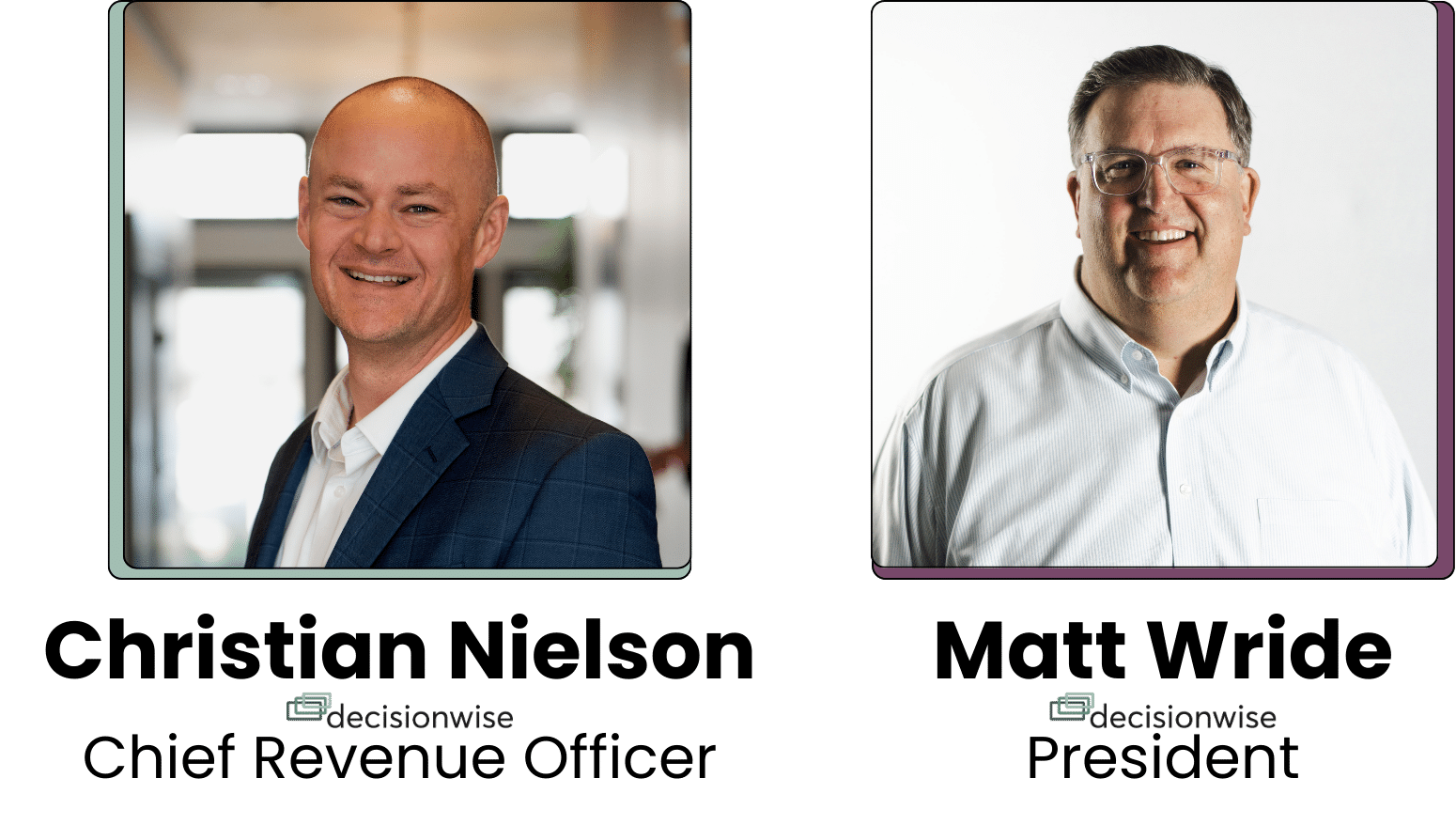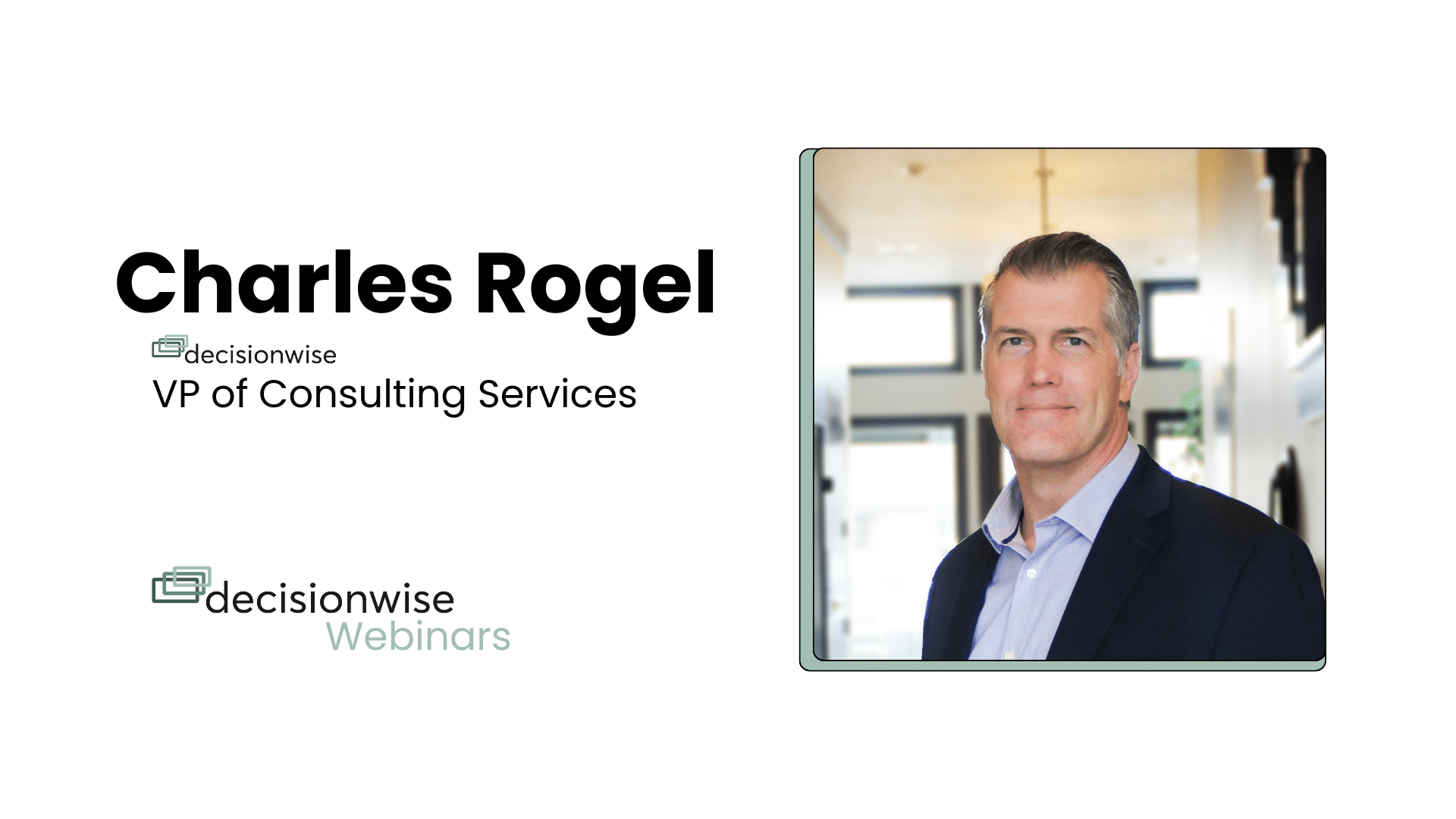Growing in our jobs doesn’t always mean getting a promotion or a raise. Growth is about mastering new skills, taking on challenges, and pushing to be better—both professionally and personally.
Results from DecisionWise employee surveys show that managers often fail to challenge employees enough to learn and to achieve higher results. Similarly, many employees don’t find their work challenging enough to keep them engaged. Imagine the untapped potential! On the other hand, stretching, taken to the extreme, can result in unhealthy stress. Growth strikes the balance between boredom and burnout.
Definition of Growth
DecisionWise defines employee growth as being stretched and challenged in a way that results in personal and professional progress. What’s interesting about that definition is that the words are really active. Engagement is not a state of being just happy, it’s really giving that discretionary effort invested in your hearts, hands, mind, and spirit in your work. Growth is an active process of stretching, challenging, making progress.
In a business context, growth results in both professional and personal progress. In general, most humans are looking for ways to move, grow, progress, and get better. Many of our ideals in the U.S. are built on self-reliance and “doing-it-yourself” in a business context that translates into people wanting to improve.
Growth Vs. Advancement
Growth is a challenge for many organizations. One of the questions we ask on our survey around this topic is, “my work provides me the opportunity to learn and grow and be challenged and stretched in a way that results in personal growth.” Scores from this question tend to be higher than most others. So, in the day to day work, people feel like they are generally making progress. However, when we ask questions about growth within the larger context of the organization, such as, “my organization provides opportunities for learning and growth,” we find that the scores are a lot lower. People’s perceptions are that, “yes, I’m learning in my day-to-day, but I’m not getting from the organization what I’m looking for.”
Traditionally, we have viewed growth as advancement. In the minds of many employees, they think of growth as advancing in terms of a promotion, a title change, and greater compensation.
First, we have to get comfortable with the idea that growth can’t just mean promotion to a management role. Second, organizations have to create growth and advancement opportunities for people, beyond just moving vertically in the ranks. After all, there are only so many management positions.
Millennials and Growth
A common perception of millennials is that they are overly ambitious, like wanting to be the CEO within a couple of years. When you really get down to it, a millennial (or anyone for that matter), is anxious to learn and are looking for experiences.
One of my colleagues discusses growth in terms of being stretched and challenged in ways that build, improve, and strengthen personal and organizational capabilities. The word “capabilities” is a nice way to look at growth. It’s not just limited to moving up in an organization, rather it’s the continual process of becoming better.
When I say, “moving up the corporate ladder,” you probably think of going from an individual contributor to a team leader, to a manager or supervisor, and into executive-level leadership. You are on a management trajectory and increasing your influence, increasing your span of control, getting a new title, getting more pay, and so on. Unfortunately, those promotions have been associated with growth. Let’s disassociate employee growth from the traditional corporate ladder. In painting a house, if I put a ladder up against the house, I can’t just climb the ladder and paint that one part of the house. I have to move the ladder to different parts of the structure in order to really get full and complete coverage.
When we think about this idea of a corporate ladder, we must reframe those development opportunities and learning experiences at all levels of the organization. For the individual, it’s less about a straight ladder and more about creating a portfolio of experiences.
Several years ago, I hired an employee into a project manager role which was the first job he’d ever worked. At the 90-day review, I gave him some clear redirecting feedback, “you’re doing well here, but here are some things that you need to do as part of your role as you’re stepping up on that ladder.” I told him to come back to me in a week and provide me with a couple of goals based on our conversation. He came back with goals that had nothing to do with his job. They had more to do with my job!
It’s great he had goals for a long-term vision, but it was important for him to get comfortable and explore the surrounding opportunities. There are often opportunities to understand the different businesses of your organization, work with different managers, or figure out new ways of thinking. Collect that portfolio of experiences and help advance your career.
Creating an Environment for Growth
Organizations can create clear policies or organizational structure to make expectations for growth clear. For example, Marriott says if you’re going to move up the ladder, you have to run multiple business units before you are considered for a c-suite role. They make the requirement clear because they value different experiences.
Understand that there must be a 50/50 proposition of creating engagement between the employer and employee. 50% from the individual and 50% from the organization. In the ideal situation, a manager is looking out for your best interest, however, this is not always the case. Many employees enter their first job and expect their manager to tell them what to do, to give them opportunities, promote, and advocate for them. Most likely, you will have a good, but busy, manager that will dialogue with you, support you and connect you to opportunities. Ultimately, individual growth is your responsibility.
I was recently working with a newly promoted leader who was lamenting that her team “complained” on their survey responses about growth opportunities. She said, “All I’ve been doing is working with them on these growth opportunities. I’ve been trying to figure out how do I give more to them. They want to grow and I’m trying to help. I’m in a bit of a panic.” In her mind, she had defined growth as a vertical path and was worried about taking all the right steps and almost forcing people to get there. My comment to her was, “don’t work harder on their growth than they are willing to work. You just can’t do that. They’ve got to own your own growth path and lean into it.” As managers, we try to fix everything. We try to take everything on for ourselves. The reality is people have to find their own way.
So again, as an individual, it’s up to you first to say, “here’s what I’m looking for, here’s what I would like and I’m asking for this.” It’s the manager’s responsibility to say, “let’s do this first” or “this would be a good step,” and then for you to lean into that and do it, helping to create that collection of experiences for your career.
Can Growth Opportunities Ever Be Negative?
During the first six months of employment, employees should just be primarily learning their job function. Organizations are doing a lot with technology to quickly onboard employees, but during this time we should not create individual development plans. What I find is that you should wait to have those growth conversations until after the first six months, when the employee has had a chance to learn their job and get good at it.
For employees who have been with the organization beyond 6-months, you want to help them find what is called the zone of proximal development, that right spot between the stress of being pushed too far and complacency.
I tell my team, “look, I’m going to stretch you and push you, but know you’ve got a life preserver. I’m not going to let you drown you.” And for each person that’s a little bit different. So, you’ve got to pay attention to the signs. You’ve got to be in constant dialogue so that you aren’t pushing them beyond their capability.
What’s Stopping Growth?
Growth often appears as being an opportunity area more than any other Engagement MAGIC® key: meaning, autonomy, impact, and connection. I think that’s partly because it’s so personal. Collectively you create growth opportunities based on the 50/50 manager/employee relationship.
In rapidly growing organizations—individual growth might not be a priority; however, the overall growth of the company can be reframed as a growth opportunity.
I worked with one upcoming startup that’s been around seven years or so and they said, “we don’t have time for growth. We’re so busy. Our company has grown 500 percent over the last couple of years and we project we will triple the population of our employee base in the next three to five years.” My response to them was, “You’re getting opportunities to step into new roles, to have new responsibilities. That’s growth.” Part of it is thinking about how we frame the opportunities around us.
Reframing Growth
Employees want opportunities to grow and often that growth opportunity is created by reframing existing situations. Instead of saying, “I know you have a lot on your plate and I’m sorry to ask you to do this…,” Reframe the statement as, “this is a great opportunity for you to leverage your ability to network with people. Here’s a project that I really need your help on. Is this something you can help me solve?”
It’s changing that mentality from, “it’s up to me as the manager to solve everything.” When someone comes to me with a problem, I might instead turn it back and say, “what do you think we should do? Would you be willing to take that on?” Creating those portfolios of experiences and reframing existing opportunities is where growth will occur.
Finally, think of growth as this idea of movement, of constant challenging and stretching on a day to day basis. In our meetings that we have, how do we have the conversations that help each other grow? What do we need to start doing? What do we need to stop doing? What do we need to continue? Let’s make it part of the conversation. Growth then becomes less of a formal experience that people go through and becomes part of everyday development and learning.
Consider surveying your employees to see how meaning is impacting overall engagement.




